University of Mary Officially Opens New Residence Hall with Ribbon Cutting and Naming Ceremony
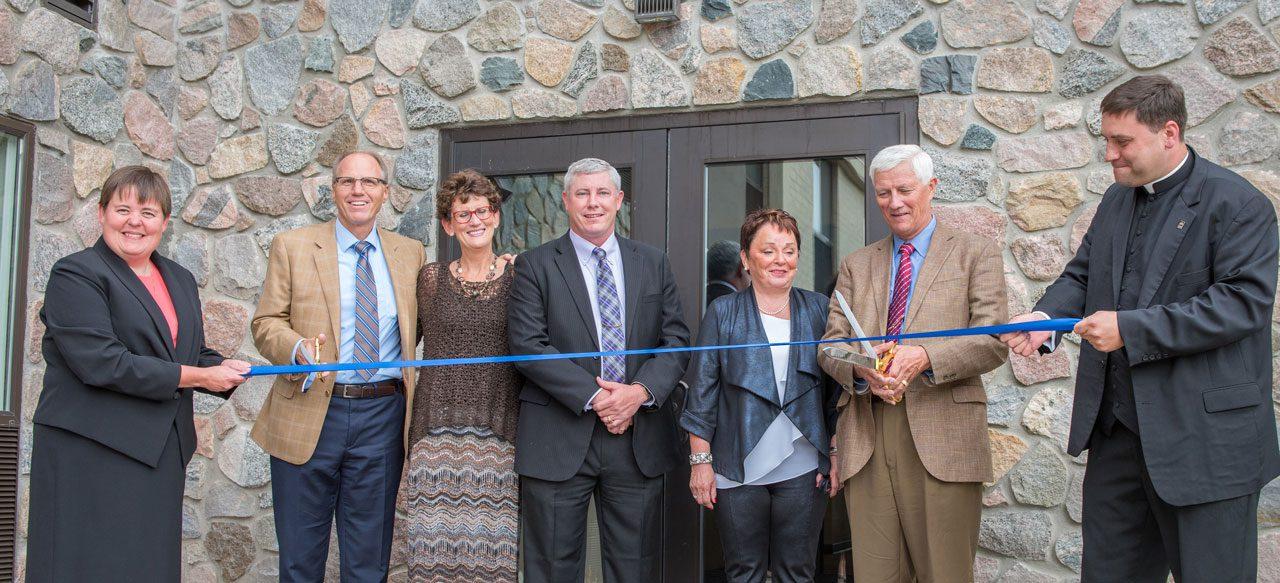
BISMARCK, ND — Construction workers at the University of Mary put away the hard hats and put a halt to all the construction for one hour today to celebrate the grand opening of the school’s new residence hall at the center of campus.
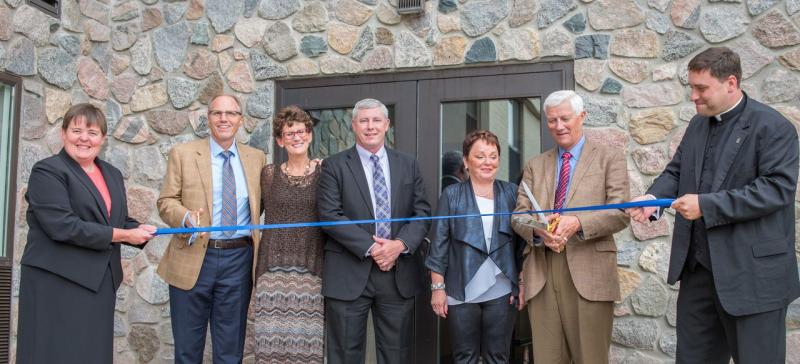
Students, faculty, staff and honored guests officially marked the opening of the all-female, 276-bed residence hall with a festive ribbon-cutting ceremony, the unveiling of its new name, Roers Hall (pronounced Roars), and tours of the facility. Roers Hall is just steps east of Welder library tucked between two other residence halls, Greg Butler Hall and Hillside Hall, forming a neatly nestled quad that fosters more interaction among students.
“We are extremely grateful to the Roers family. Their faithfulness and devotion to Catholic higher education and their love for our students and the Benedictine Sisters of the Annunciation Monastery, founders and sponsors of the University of Mary, is an inspiration to us all,” said University of Mary President Monsignor James Shea. “Over the years Roers has expanded west from their home in Fargo, so they understand first-hand the growth we are experiencing in North Dakota, particularly in Bismarck and on our campus.”
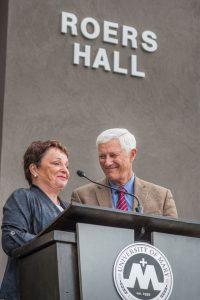
For the Roers family and their employees, community development is a way of life. Since it began in 1976, Roers Development has become a true full-service firm and a leading construction, development, property management and real estate company that pays over $15 million in wages and contributes in excess of $150 million in gross sales annually to North Dakota’s economy.
“We are honored to have our name on this building,” said Jim Roers, president and CEO of Roers Development, based out of Fargo with offices in Bismarck, Dickinson and Minot. “We know these ladies who come together to walk these halls in friendship, faith and fun, represent all that is good about community. It’s our desire that Roers Hall gives these students lifelong relationships, a healthy learning environment and a sense of place that shines a light of life upon all who call it home.”
The $11 million Roers Hall, made possible through a multi-million dollar cash gift from Roers Development, is the largest living quarters on campus. A majority of the residents are first-year students occupying the first two levels. The third floor, called St. Scholastica Learning Community, is dedicated to those women of various ages who desire to live in an intentional faith-centered community. Also on that level is a new chapel that will be completed in December and open to all students of Roers Hall for prayer and reflection.
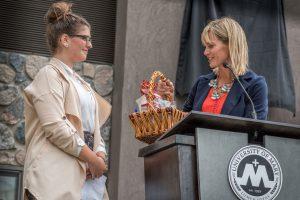
“As students, we’ve dreamed of being able to live in a brand new residence hall, so today I’m blessed to say that dream came true for me and many of my new classmates,” said Shanna Stevenson, a junior from Woodbury, MN, double-majoring in psychology and elementary education. “I think I can speak for my new neighbors—nearly 300 strong–this is more than just a building, but a place where we can learn from one another and serve one another.”
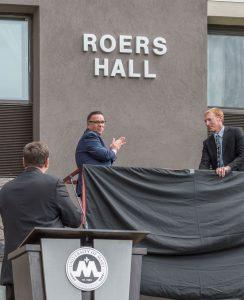
Also unique to Roers Hall and residence halls across the country is the introduction of the new Residence Scholar initiative. This unique program allows the hall a faculty scholar to live in community with the students as mentor, tutor, teacher and someone who can provide a helping hand or an attentive ear.
“This is all very satisfying and yet humbling to have reached this landmark day on two fronts,” stated Jerome Richter, vice president for the Office of Public Affairs and the person spearheading the three-phased Vision 2030 fundraising campaign totaling $272 million. “Not only does today complete our first major capital project of the campaign, but it also represents a landmark midway point of our $96 million Phase One fundraising goal: to date, Vision 2030 has climbed over $51 million.”
Those funds already raised have been directed towards Roers Hall, the new fieldhouse that will be finished this November, the Lumen Vitae University Center scheduled to open in August of 2017, along with faculty formation and numerous scholarships. Richter adds that fundraising for the remainder of Phase One is in full force and will go towards new programs, new scholarships and more renovations—including the establishment of the very popular new School of Engineering slated for north campus and occupying two levels of the current University Dining Center building.
